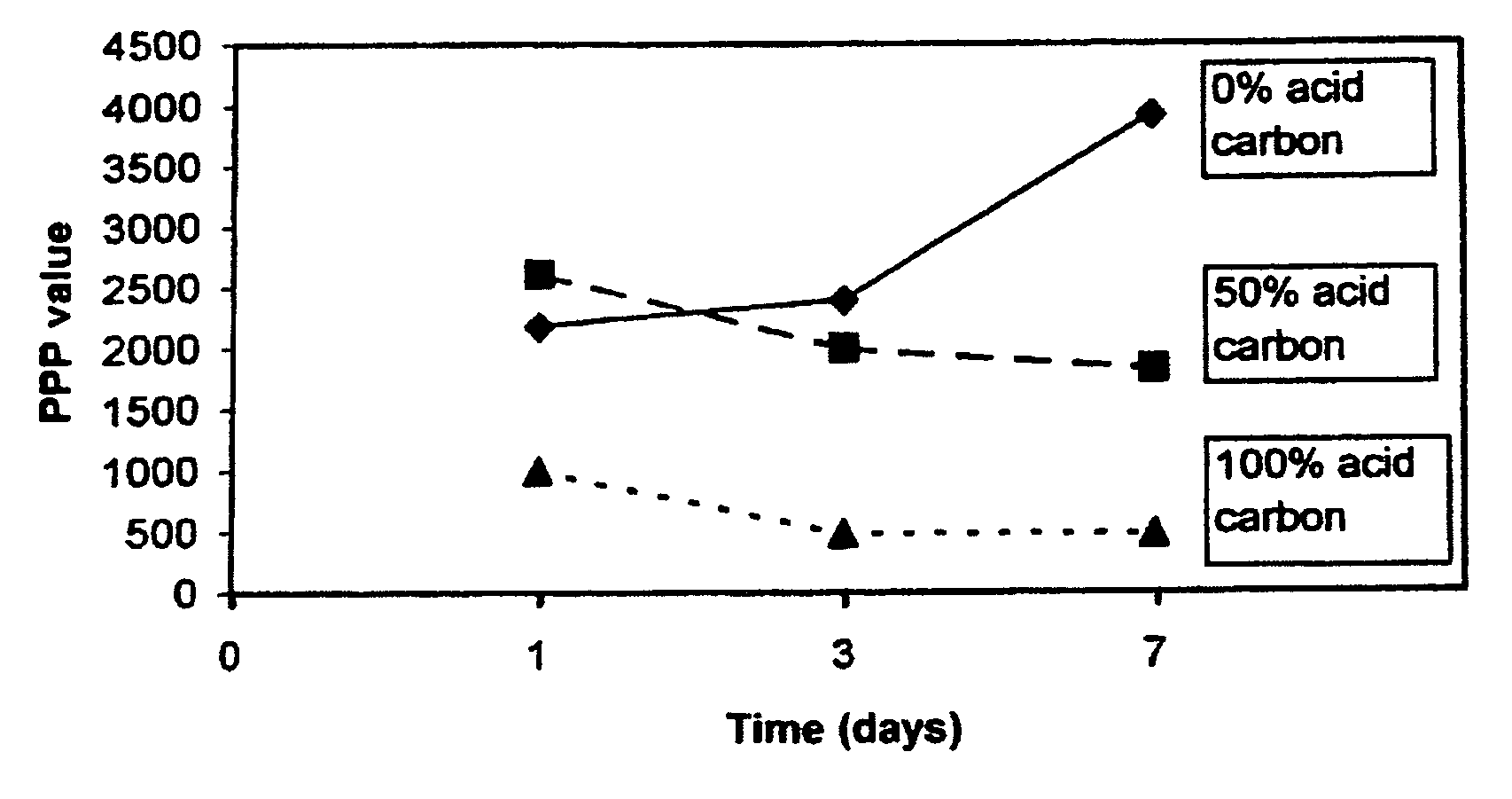Emulsion ink
a technology of emulsion ink and water ink, which is applied in the field of emulsion ink, can solve the problems of rheology having an adverse effect on the performance of ink in digital duplicator, inability to achieve the effect of reducing the number of ink residues, and improving the performance of ink. , to achieve the effect of improving the stability of ink, and improving the quality
- Summary
- Abstract
- Description
- Claims
- Application Information
AI Technical Summary
Benefits of technology
Problems solved by technology
Method used
Image
Examples
example 1
[0033]Acid carbon (pH less than 6) was added to an aqueous solution of polyvinyl pyrrolidone, glycerol and a biocide solution containing a blend of methyl isothiazolinone and benzisothiazolinone, and stirred with a toothed wheel at high speed to create a coarse dispersion of the carbon. The dispersion was milled in a Netzsch Minizeta horizontal bead mill containing zirconia grinding beads (0.4-0.7 mm) to achieve a maximum particle size of less than 1 μm.
[0034]The milled carbon dispersion was combined with a further quantity of water, representing 35.1% by weight of the total ink formulation, to create the water phase shown in Table 1, below, in which the amounts of the different components are in grams. The pH of this water phase was 4.2.
[0035]An oil phase was prepared in accordance with Table 1 by blending a high viscosity naphthenic oil (41-43 cSt at 40° C.) with a low viscosity naphthenic oil (12-14 cSt at 40° C.) together with two emulsifying agents, sorbitan mono-oleate and an ...
example 2
[0038]Using a neutral carbon pigment which yielded a water phase pH value of 7.3, an ink was prepared in accordance with the formulation in Table 1 using exactly the same method as for Example 1. Ink rheology was characterised by the same methods as Example 1.
example 3
[0039]A water phase was prepared in accordance with Table 1, below, by blending equal proportions of the water phases from Examples 1 and 2. The pH of the water phase was 5.6. Thereafter an emulsion ink was prepared and characterised using exactly the same methods as Example 1.
[0040]The results obtained for Examples 1 to 3 are also provided in Table 1, below, and are depicted graphically in the FIGS. 1 and 2.
[0041]From Table 1 and FIGS. 1 and 2 it can be seen that inks comprising acid carbon (pH less than 6) exhibit a small initial decrease in results for PPP and yield value measurements which thereafter become relatively stable as the ink ages. This trend is confirmed by results of the accelerated aging tests at 70° C. where there is generally little change from the initial measurements taken before ageing. By contrast, the ink of Example 2, comprising only carbon with a pH of greater than 6, shows a continuing process of increase for both PPP and yield value measurements to the po...
PUM
| Property | Measurement | Unit |
|---|---|---|
| pH | aaaaa | aaaaa |
| temperature | aaaaa | aaaaa |
| particle size | aaaaa | aaaaa |
Abstract
Description
Claims
Application Information
 Login to View More
Login to View More - R&D
- Intellectual Property
- Life Sciences
- Materials
- Tech Scout
- Unparalleled Data Quality
- Higher Quality Content
- 60% Fewer Hallucinations
Browse by: Latest US Patents, China's latest patents, Technical Efficacy Thesaurus, Application Domain, Technology Topic, Popular Technical Reports.
© 2025 PatSnap. All rights reserved.Legal|Privacy policy|Modern Slavery Act Transparency Statement|Sitemap|About US| Contact US: help@patsnap.com


